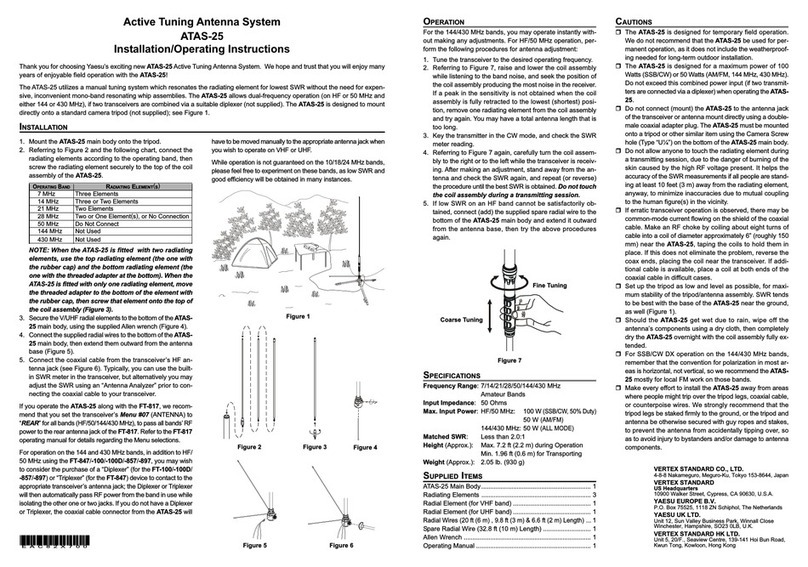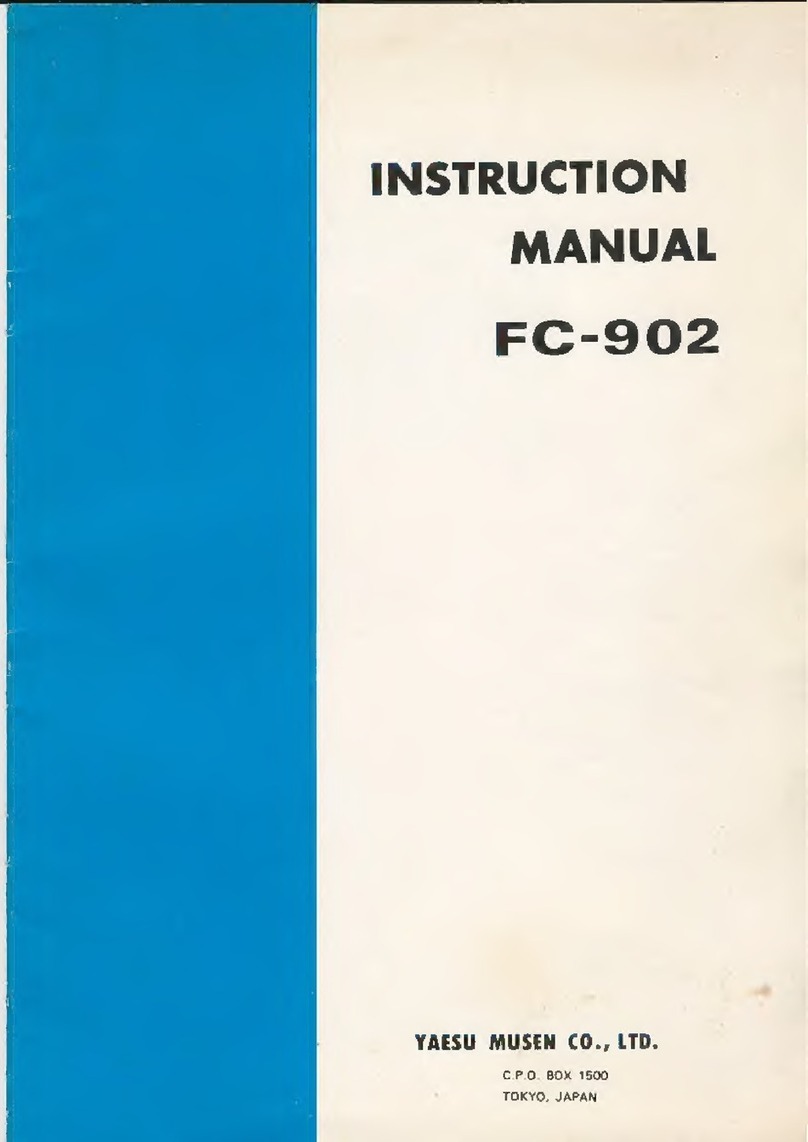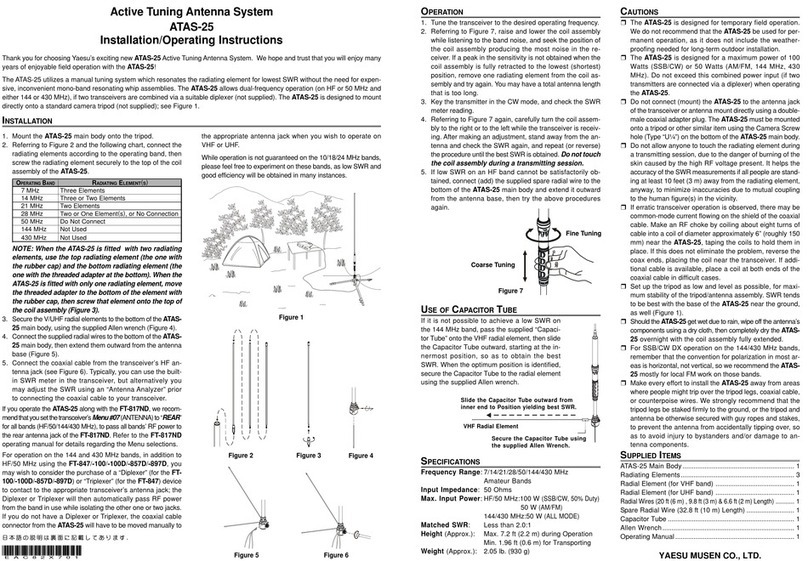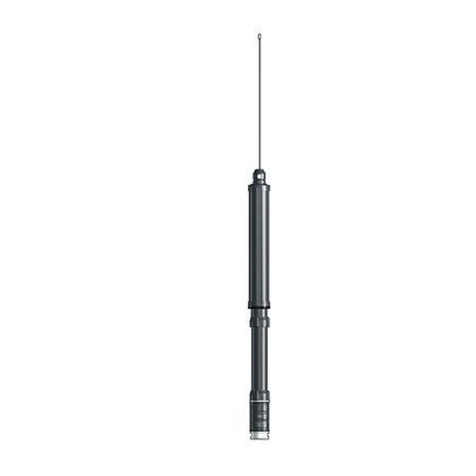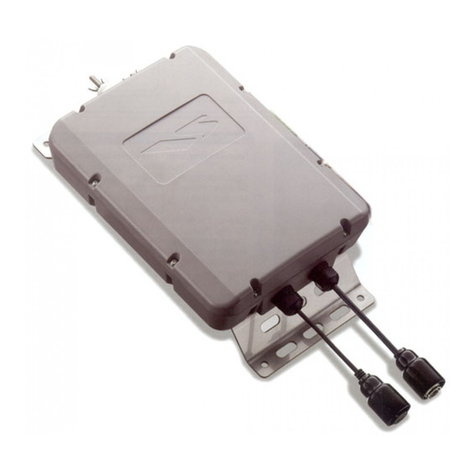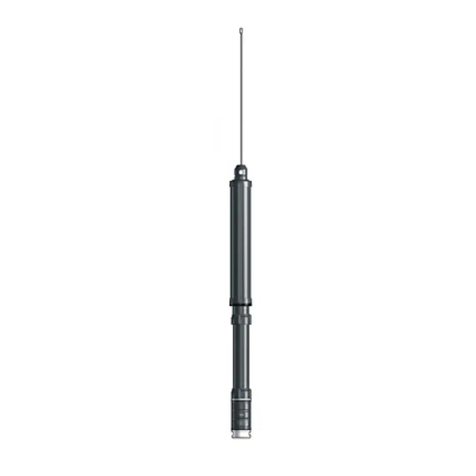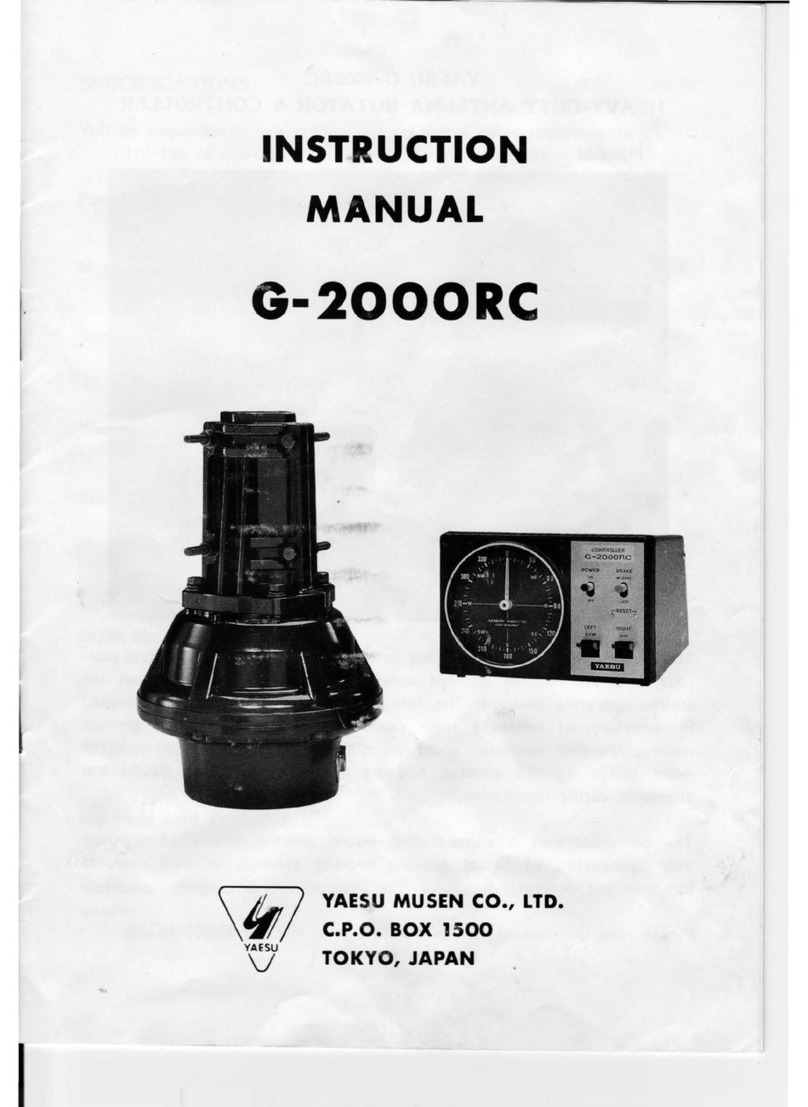
Interface for Yaesu G-5400 and G-5600 Antenna-rotators
I started to deal with Earth-Moon-Earth communications in
the middle of 2005. I had to realize, that my two-bay
DJ9BV (2.1 wavelength boom length each) antenna array is
not enough for this mode of communications. It seemed to
be an obvious solution to improve the boom length of the
existing antennas which are otherwise consisting of mod-
ules. Unfortunately, after modifying the antennas it became
evident, the original display solution using Deprez meters
can not meet the new requirements. To solve this problem
this interface was born, which beside the exact display
makes it possible to rotate the antenna by computer control,
so it is a great help in providing satellite communications as
well. Those who use shorter antenna for satellite tracking
only, can build the interface without digital display. The
interface was made in two versions. One of them makes use
of a parallel port the other uses a serial port for communica-
tions with the rotator. Both solutions have advantages and
disadvantages. The version making use of a parallel port
has a great disadvantage because the port can handle eight
bits only; hence the best possible definition is 1.4 degree.
On the other hand, while the serial ports are generally in
use for different communication purposes, parallel ports are not utilized i.e. later printer models are made for
USB ports. The base of both versions is a PIC16F870 microprocessor which includes a ten-bit A/D converter
and a serial port driver too.
Interface for the parallel port
Operation
This interface uses the protocol of the FODTRACK pro-
gram. This driver can be freely downloaded from the Inter-
net. Latest software like WXTRACK is able to handle an
interface like this, by default. The co-ordinates of azimuth
and elevation are calculated in eight bit accuracy. AUTO-
FEED output decides which data is active at a given time.
The high level output of STROBE shows the validity of
data. The processor continuously checks STROBE signal
and in its active state it decides depending on the level of
AUTOFEED signal, whether data is to be applied as azi-
muth or as elevation. According this, it puts data into a
variable. In case the content of variables does not corre-
spond with the momentary position of the antenna then it
gives an instruction to turn the antenna until it reaches the
required position. In this version the maximum elevation of
the antenna can be 90 degrees. The FLIP function of satel-
lite-tracking software is disabled. To turn the antenna into a
position exactly without climbing the tower or mast, the
interface is equipped with two variable resistors to make it
possible to correct the difference between the displayed
values and the real position of the antenna. These adjust-
ments can be done by connecting STROBE and AUTO-
FEED inputs to low logic level before the interface is












